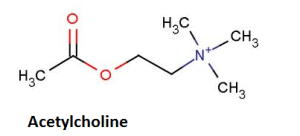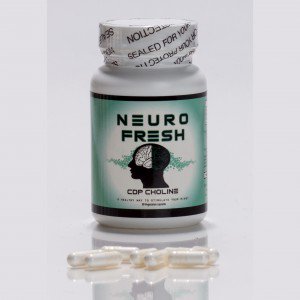Acetylcholine (frequently abbreviated ACh) is the most widely spread neurotransmitter – chemical messenger assisting in carrying signals across the nerve synapse. It is the most plentiful neurotransmitter, which may be found in both the peripheral and central nervous systems (VandenBos, 2007). Acetylcholine used to be the primary neurotransmitter to be discovered. This neurotransmitter was found by Henry Hallett Dale in the year 1914 and its existence was confirmed by Otto Loewi (VandenBos, 2007).
It is helpful to think of neurotransmitters as messengers of the brain. These chemicals, which originate within the body, assist in delivering messages from one neuron to another. Basically, neurons that use acetylcholine to send the messages are recognized as cholinergic neurons. The pathway for their communication is the synapse. Neurotransmitters shift between synapses and join the receptors specially created to get messages only from that particular chemical (Whittaker, 1990). Upon this blending, nerve cells related to the receptor site are activated in one of two ways. Either they will fire in the excitatory reaction, or they will be averted from doing so in the inhibitory reaction.

Functions of Acetylcholine
- Acetylcholine performs as a transmitter at all neuromuscular (nerve-to-skeletal muscle) connections. It stimulates muscle contractions and, thus, all behavior.
- Acetylcholine is the transmitter of parasympathetic half of the autonomic nervous system.
- Acetylcholine is a transmitter in various brain regions (for instance, basal ganglia, cortex, and hypothalamus) and is required for proper memory and cognition, as well as motor control. The action of acetylcholine released at a synapse is ended through breakdown of ACh by enzyme acetylcholinesterase.
The importance of acetylcholine may be explained by the fact that there are particular cells geared to react only to acetylcholine spread through the dissimilar parts of the brain. The activated receptors enable the communication from basal forebrain to the hippocampus, two regions controlling memory and learning. ACh’s role in the brain enhances the intensity and quality of neuron signaling by increasing theta waves. In particular, acetylcholine enhances the encoding of memories in the perirhinal and entorhinal cortex (Whittaker, 1990). Also, it prompts synaptogenesis, the normal development of synapses all through the brain (Whittaker, 1990). This additionally improves memory encoding, and helps other neurotransmitters to communicate messages (Colman, 2006). The lack of the necessary neuroplasticity may be the major aspect of diseases, such as ADHD and Alzheimer’s Disease.
Acetylcholine influences a large part of body systems counting the cardiovascular system by playing a role of a vasodilator, by lessening cardiac rate, and by lessening cardiac contraction; the gastrointestinal system by means of augmenting peristalsis in the stomach and by rising the number of digestive contractions; and, ultimately, the urinary tract by lessening the aptitude of the bladder and increasing the voiding pressure (VandenBos, 2007). Furthermore, acetylcholine influences the respiratory system and facilitates secretion by all glands, which respond to parasympathetic nerve impulses (VandenBos, 2007).
Furthermore, acetylcholine serves excitatory and inhibitory functions, which means that ACh can speed up or slow down nerve signals. In the central nervous system, its function is mainly excitatory. It assists in learning, memory, arousal, and neuroplasticity (Colman, 2006). ACh also participates in engaging sensory functions upon waking, assists in concentration, and performs as part of brain’s reward system. Also, acetylcholine is involved in maintaining rapid eye movement sleep. In the peripheral nervous system, it helps with the cardiac, skeletal, and smooth muscles’ contraction (Colman, 2006). Unevenness in acetylcholine leads to the emergence of myasthenia gravis, an autoimmune medical condition, which causes muscle weakness and fatigue (Colman, 2006).
Importance of acetylcholine for the central nervous system: in the central nervous system, acetylcholine may be discovered mainly in interneurons. In this system, acetylcholine has numerous effects counting arousal and reward, as well as learning and short-term memory (via synaptic plasticity, the capability to alter the neuron connection strength). A few significant long-axon cholinoceptive pathways have also been discovered. Remarkable is the cholinoceptive projection from the nucleus basalis of Meynert to the forebrain neocortex and linked limbic structures (Waymire, n.d.). Degeneration of the pathway is one of the medical conditions blamed on Alzheimer’s disease. There is also a projection from diagonal band region to limbic structures (Waymire, n.d.). The majority of subcortical areas are innerved by neurons from ponto-mesencephalic area.
Importance of acetylcholine for the peripheral nervous system: in the peripheral nervous system, acetylecholine plays a role of the neurotransmitter at the neuromuscular connection between skeletal muscle and motor nerve. It acts to effectively stimulate the muscle movement (Waymire, n.d.). ACh receptors on the muscles accept acetylcholine and lead to skeletal muscles’ contraction (Waymire, n.d.). It should also be mentioned that they make the heart muscles relax.
Importance of acetylcholine for the autonomic nervous system: in this case acetylcholine acts as the neurotransmitter in the preganglionic parasympathetic and sympathetic neurons. Acetylcholine also acts as the neurotransmitter at all the parasympathetic innerved organs, as well as at the sweat glands and at piloerector muscle of the sympathetic nervous system (Waymire, n.d.). As a neuromodulator, acetylcholine exists in the cerebrospinal fluid and control neurons directly rather than control via a single synaptic link (Waymire, n.d.).
Nootropics that further benefit Acetylcholine
Stimulating or increasing the level of Acetylcholine within the brain is possible through the use of a variety of nootropics. Cholinergics work by further increasing the overall level of acetylcholine found present within the brain. CDP Choline, Alpha-GPC and Centrophenoxine are all examples of cholinergic nootropics. Several nootropics, such as most of the Racetam chemical class, work by stimulating the acetylcholine receptors found within the brain. Both of these benefits are further solidified through the “stacking” or combining of both cholinergic nootropics and nootropics that stimulate acetylcholine receptors.

*Click Here for More Information Regarding Nootropics that Further Benefit Acetylcholine*
References
Colman, A. (2006). A dictionary of psychology. New York, NY: Oxford University Press.
VandenBos, G. (2007). APA dictionary of psychology. Washington, DC: American Psychological Association.
Waymire, J. Ph.D., Acetylcholine Neurotransmission (Section 1, Chapter 11) Neuroscience Online: An Electronic Textbook for the Neurosciences | Department of Neurobiology and Anatomy – The University of Texas Medical School at Houston. Neuroscience.uth.tmc.edu. Retrieved 30 December 2014, from http://neuroscience.uth.tmc.edu/s1/chapter11.html
Whittaker, V. (1990). The contribution of drugs and toxins to understanding of cholinergic function. Trends In Pharmacological Sciences, 11(1), 8-13. doi:10.1016/0165-6147(90)90034-6
